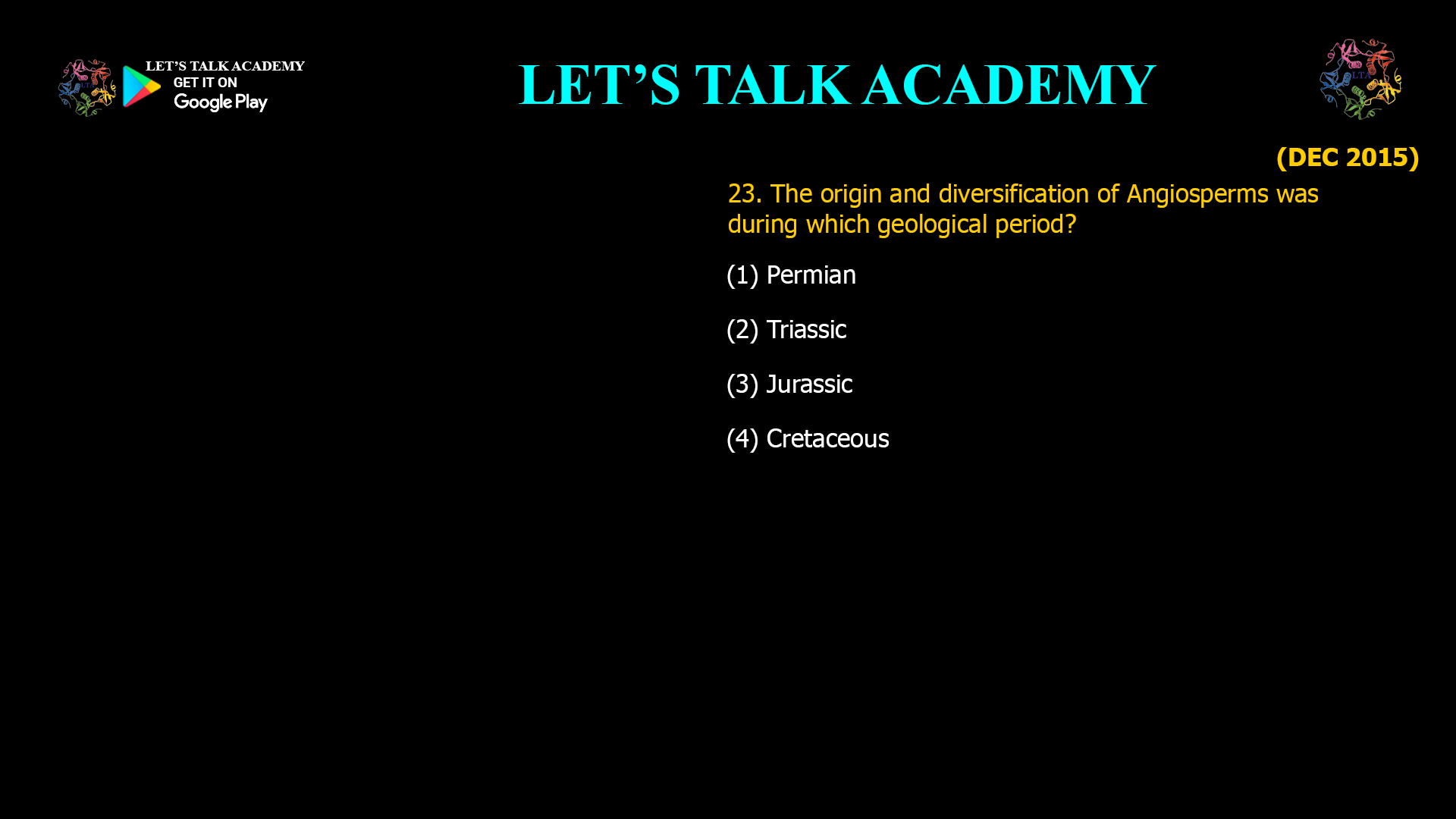- The origin and diversification of Angiosperms was during which geological period?
(1) Permian (2) Triassic
(3) Jurassic (4) CretaceousINTRODUCTION
Angiosperms, or flowering plants, are the most diverse and ecologically dominant group of land plants today. Their sudden appearance and rapid diversification fundamentally changed terrestrial life, supporting new ecosystems and driving co-evolution with insects and other animals. But when did this botanical revolution take place?
The Cretaceous Period: Birthplace of Angiosperms
-
Fossil evidence and paleobotanical studies consistently place the origin and major diversification of angiosperms in the Cretaceous period.
-
The earliest undisputed angiosperm fossils date to the Lower Cretaceous, around 125 million years ago146.
-
By the Middle Cretaceous (about 100 million years ago), angiosperms were rapidly diversifying and becoming ecologically dominant, crowding the fossil record with a staggering variety of forms137.
-
This period also saw the rise of pollinating insects, which played a crucial role in the success and spread of flowering plants14.
Supporting Evidence
-
Fossil Record: Lower Cretaceous rocks yield the first clear angiosperm leaves and pollen, while mid-Cretaceous strata show a dramatic increase in diversity and abundance1346.
-
Ecological Impact: The Cretaceous saw angiosperms outcompete gymnosperms and ferns, reshaping terrestrial ecosystems and supporting new food webs7.
-
Global Spread: By the late Cretaceous, angiosperms had spread across continents, forming dominant pockets of vegetation and supporting a wide array of animal life6.
Why Not Other Periods?
-
Permian and Triassic: No definitive angiosperm fossils are found from these periods; these eras were dominated by gymnosperms and other seed plants16.
-
Jurassic: While there are rare, controversial traces possibly attributed to angiosperms, the fossil record becomes clear and abundant only in the Cretaceous14.
-
Cretaceous: This period is universally recognized as the time of angiosperm origin and explosive diversification, fundamentally altering terrestrial ecosystems1367.
The Correct Answer
Given the options:
-
Permian
-
Triassic
-
Jurassic
-
Cretaceous
The correct answer is:
(4) Cretaceous
Conclusion
The Cretaceous period stands as the era when angiosperms first appeared and underwent rapid diversification, transforming landscapes and supporting a new wave of ecological interactions. This botanical revolution set the stage for the modern world, making angiosperms the dominant plant group on Earth.
-




1 Comment
Sonal Nagar
November 9, 2025Cretaceous